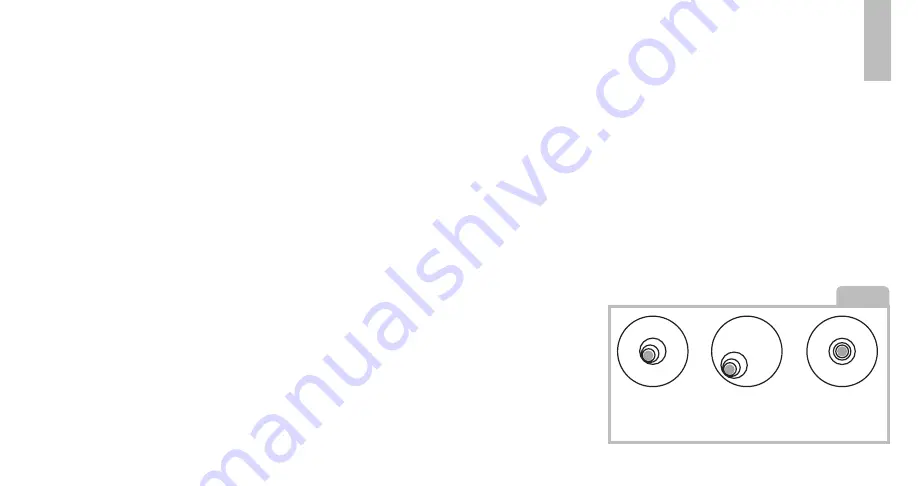
•
As you make adjustments to the primary
mirror tilt screws (Fig. 10, 3), you will
notice that the out-of-focus star disk
image will move across the eyepiece
field. Choose one of the 3 primary mirror tilt
screws and slightly move the shadow to the
center of the disk. Then slightly move the
telescope to center the star disk image in the
center of the eyepiece.
• If any further adjustments are necessary,
repeat this process as many times as needed
until the out-of-focus star disk appears as in
Fig. 18C, when the star disk image is in the
center of the eyepiece field.
21
To adjust the primary mirror tilt screws (Fig
10, 2), first turn by several turns, the primary
mirror cell lock knobs (Fig. 10, 3) that are next
to each primary mirror tilt screw. The three
primary mirror cell locking screws are slotted
head screws on the Lighbridge 114/130 Mini
models.
Then by trial-and-error, turn the primary mirror
tilt knobs (Fig. 10, 2) until you develop a feel
for which way to turn each knob to center the
reflection of your eye. Once centered, as in
Fig. 11, turn the 3 primary mirror cell locking
screws (Fig. 10, 3) to re-lock the tilt-angle
adjustment.
D. STAR TESTING THE COLLIMATION
With the collimation performed, you will want
to test the accuracy of the alignment on a
star. Use the 26mm eyepiece and point the
telescope at a moderately bright (second or
third magnitude) star, then center the star
image in the telescope’s field-of-view. With
the star centered follow the method below:
• Bring the star image slowly out of focus
until one or more rings are visible around the
central disc. If the collimation was performed
correctly, the central star disk and rings will
be concentric circles, with a dark spot dead
center within the out-of-focus star disk (this
is the shadow of the secondary mirror), as
shown in Fig. 14C. (An improperly aligned
telescope will reveal elongated circles (Fig.
14A), with an off-center dark shadow.)
•
If the out-of-focus star disk appears
elongated (Fig. 14A), you will need to adjust
the primary mirror adjusting tilt screws of the
primary mirror cell (Fig. 10, 3)
•
To adjust the primary mirror tilt screws (Fig.
10, 3), first unscrew several turns the 3 slotted-
head primary mirror cell locking screws (Fig.
10, 2), to allow free turning movement of the
tilt knobs.
•
Move the telescope until the star image is at
the edge of the field-of-view in the eyepiece,
as in Fig. 14B.
Fig. 14
A
B
C
Collimation
(c) nimax GmbH





































